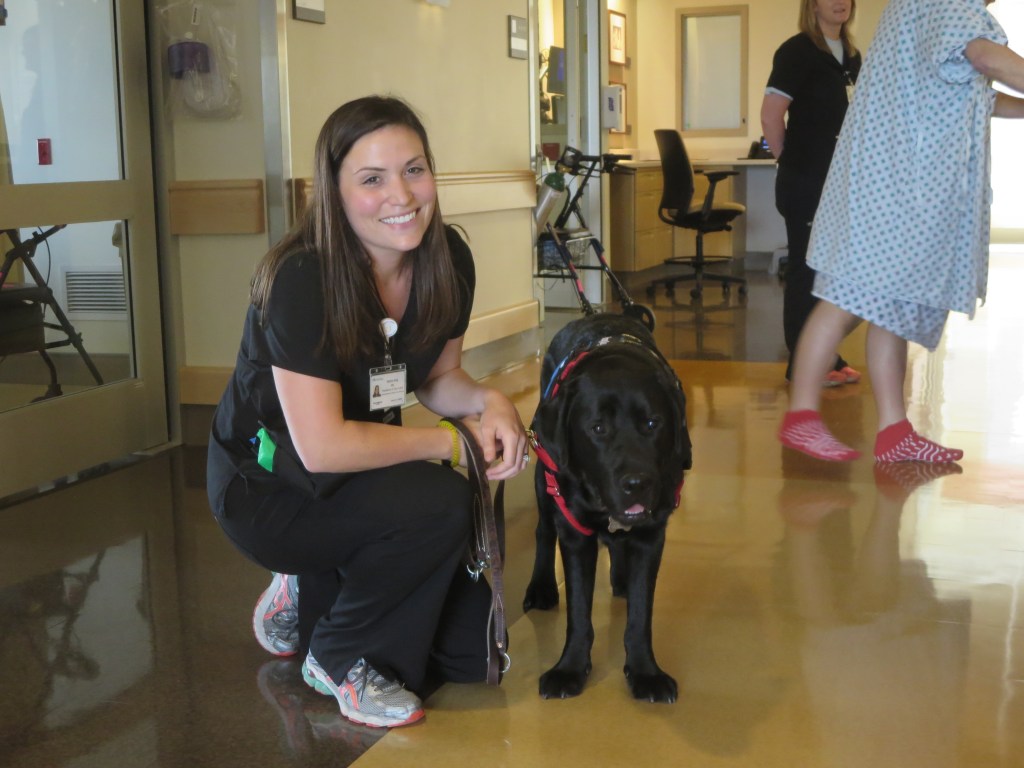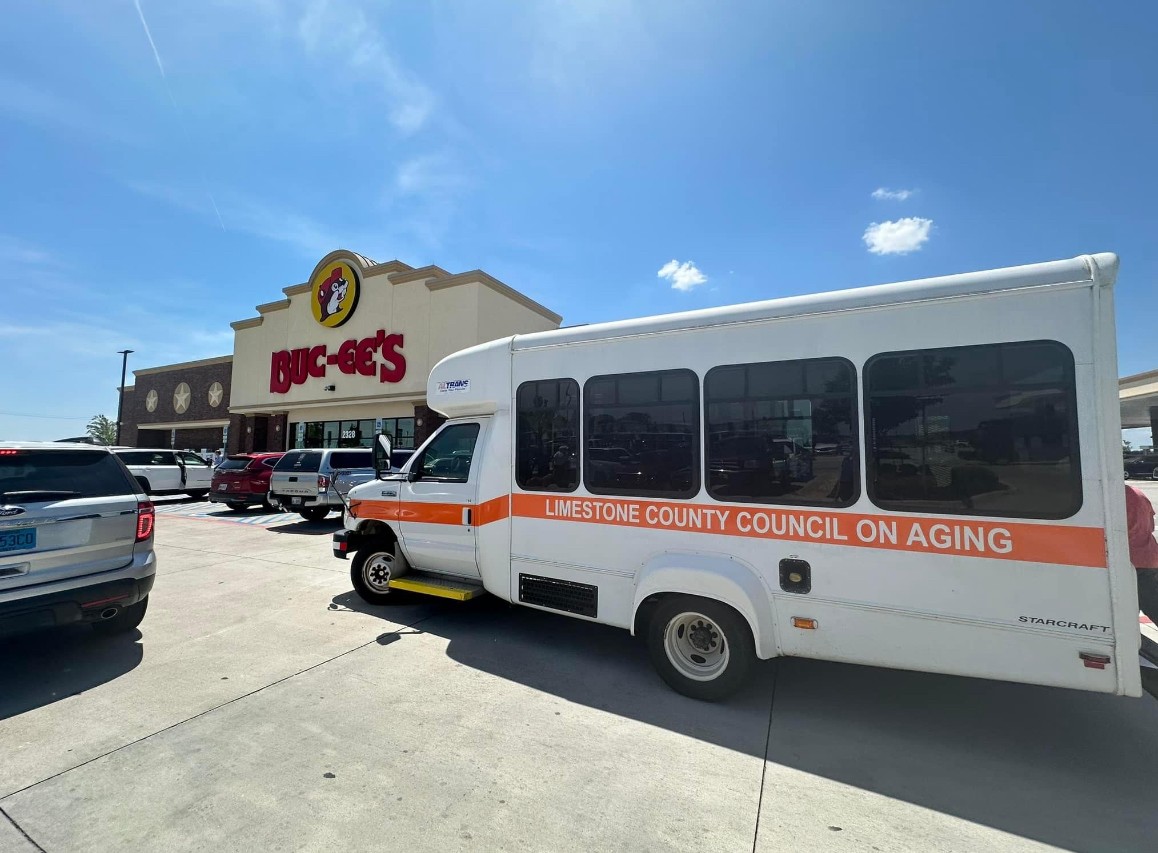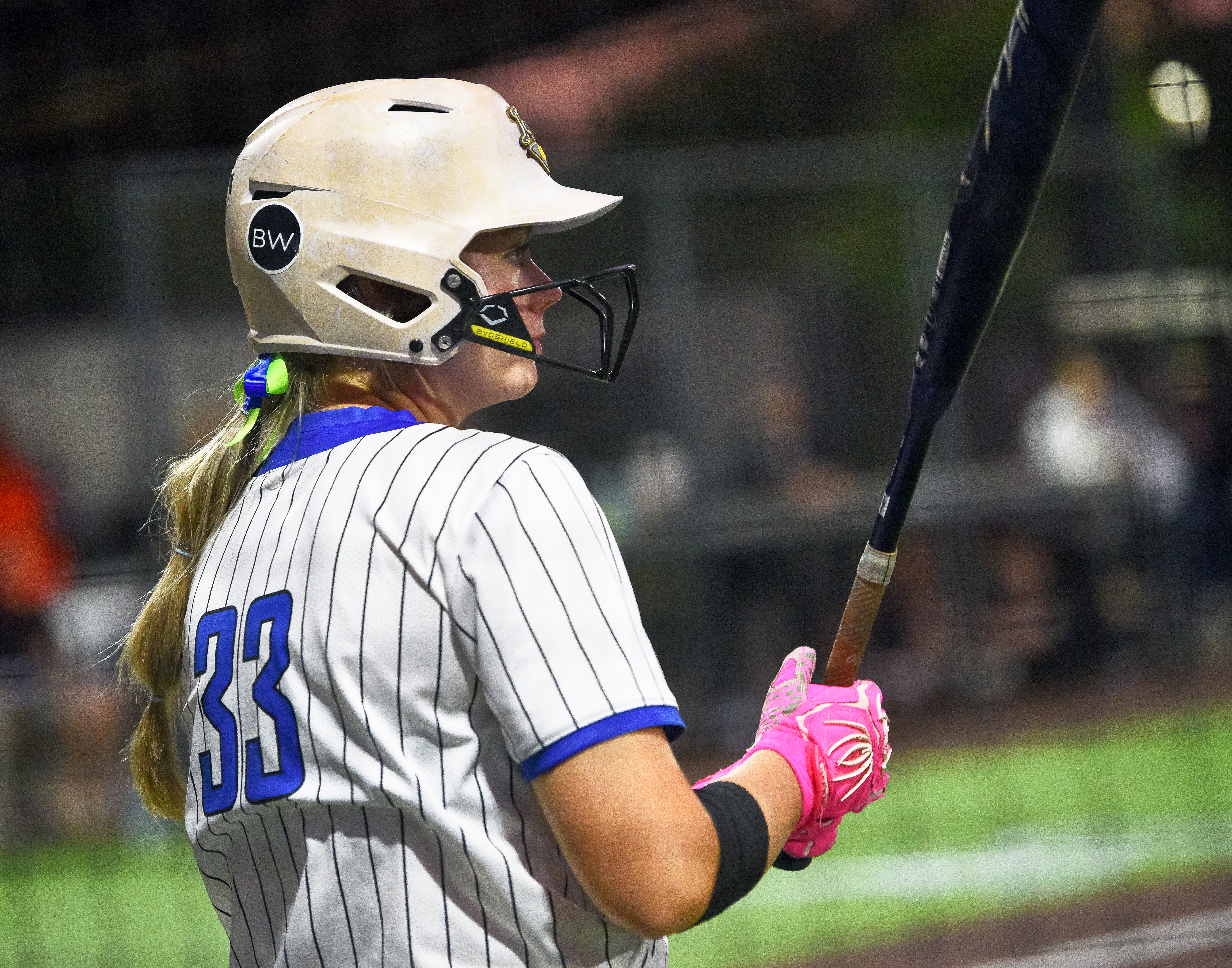Therapy dog staffer motivates patients to walk back to health
Published 7:15 am Saturday, June 11, 2016

- Carmine, ThD, with handler Katelyn King. He is one of the few unit-specific therapy dogs in the United States. His assignment is simple: get patients up and walking.
LEXINGTON, Ky. — At 85 pounds, Carmine is one of the smallest visitors to a central Kentucky hospital. But his heart is mighty, and he shares that strength with everyone on the floor.
Carmine is a therapy dog, and while he also does what dogs do best — make people happy — he is not just any therapy dog. He is one of the few unit-specific therapy dogs in the United States. His assignment is simple: get patients up and walking.
Carmine, an English Labrador Retriever, came to the Gill Heart Institute at University of Kentucky Hospital in February as a 14-month-old to drive home the institute’s point of view that cardiovascular patients should get moving as soon as possible after their treatment.
While the employment of therapy dogs in schools and even senior living facilities across the United States has become fairly common in recent years, Carmine’s presence in the hospital marks a relatively new trend.
As Transitions of Care Coordinator for the institute, Katelyn King is Carmine’s handler when he’s on the unit. She travelled to Michigan last November to work directly with Carmine so that they’d be ready to go as soon as he arrived in Lexington.
“We’ve spent a lot of time as a unit asking ourselves how we might improve a patient’s transition from the hospital to home, since that tends to be the most fragile time for patients who are trying to learn a whole new lifestyle,” she said. “If we could get them thinking about heart health before they even leave the hospital, it gives them a head start on their recovery.”
As a result, King’s role was tweaked so that she was spending as much time on the inpatient unit as she was in her other role in cardiopulmonary rehabilitation. She visits with patients on the unit before they are discharged, using the time to explain what to expect in rehabilitation and to encourage them to make lifestyle adjustments at home.
“When they arrive in cardiopulmonary rehab, I am a familiar face there to remind them what we talked about in the hospital and cheer them on in their recovery,” she said.
Part of that recovery begins almost as soon as patients are admitted to the hospital, since the unit philosophy is to walk every patient, every day — regardless of how sick they are.
“We want everybody to get up and walk,” says Dr. Susan Smyth, co-director of the Gill Heart Institute and Carmine’s off-duty mom.
In fact, Smyth explains, the Gill Heart Institute is one of just a handful of centers in the country that walks patients on extracorporeal membrane oxygenation or ECMO — an extremely complicated and invasive form of life support often used for patients awaiting heart and/or lung transplants.
Every day, a swarm of men and women in black and teal scrubs knock on the doors of each patient room on the 8th floor and help them out of bed and down the hall, whether they had surgery a week ago or yesterday. Carmine often provides the incentive patients need to get up and go.
Some patients can only take a few steps before they need to rest, but others actually make the entire loop.
“Do you have stairs in your house?” physical therapist Angela Steele asks patient Greg Kelly as Carmine stands quietly between them with one eye trained on the bag of treats around Katelyn’s waist. When Kelly answers “yes,” the group ambles to the stairwell, where Carmine leads him up to the next landing and back again.
“We need to simulate the activity a patient will experience at home to make sure they’re fit when they are discharged,” explains Steele.
Carmine is on duty every Monday, Wednesday and Friday mornings. On his off days, Carmine gets to be a regular dog, sacking out at the home of Smyth and her family.
“Carmine is very spoiled by my boys and gets to behave like a family pet,” Smyth said. “Our cat rules the roost, though, and now has Carmine well trained — but that took a while.”
King ultimately hopes to expand Carmine’s skill set to help patients in other areas of recovery. “If I can get him to play volleyball with a balloon, for example, he can help patients with balance and reaction times,” she said.
As Carmine walks the unit it’s clear he’s a popular attraction. Staff and families roaming the halls stop to say hello and pat Carmine’s massive, blocky head. His first order of business: licking the shoes of everyone who greets him.
“We’re not exactly sure why he does that,” Katelyn laughs. “We think that’s his way of checking people out.”
According to Carmine’s breeder/trainer Michelle McCarthy, for every hour Carmine works, he needs to sleep for three. So after he makes his rounds, King brings him back to her office, where he pushes chairs aside and settles in for a little nap.
It’s a dog’s life.
The Richmond, Kentucky Register contributed details to this story.





